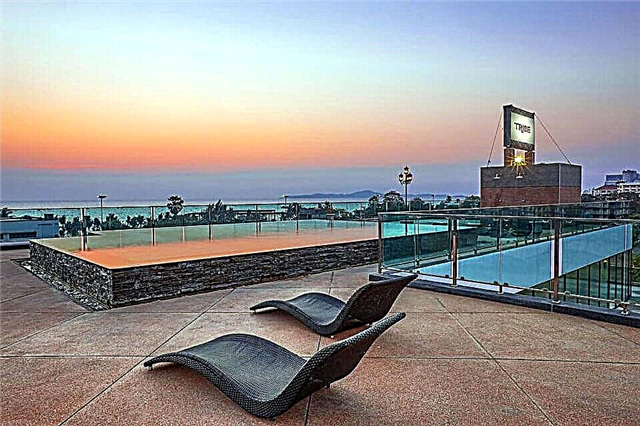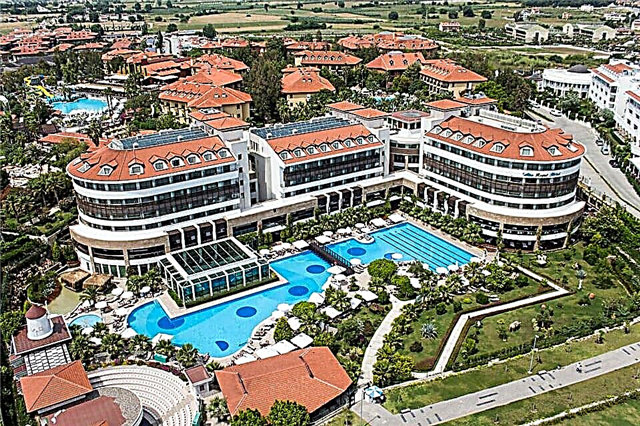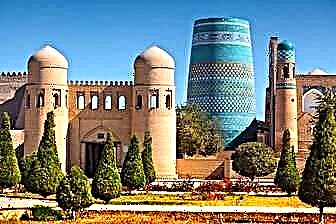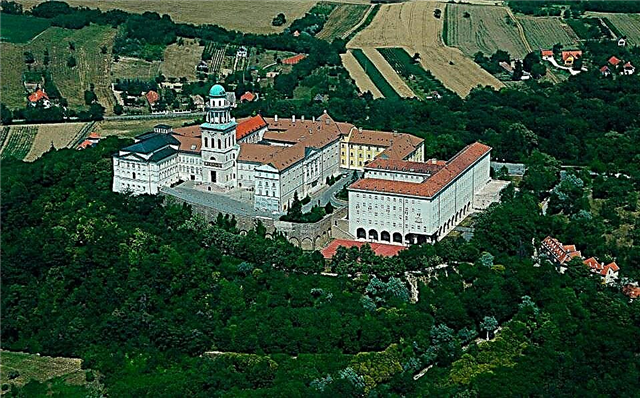There are many tourist routes in the Komi Republic. Travelers come here to climb the highest peak of the Urals - Mount Narodnaya and visit the Pechora-Ilych nature reserve. Tourists are attracted by rafting on deep rivers and forests rich in mushrooms, fishing and endless tundra spaces, where huge harvests of berries ripen.
Population
The territory, which stretches northeast of the Vologda and Arkhangelsk regions, received state status in August 1921. At the dawn of Soviet power, it was called the Autonomous Region of Komi (Zyryan). By 1936, the remote region had become the largest autonomous republic within the RSFSR.

Mount Manaraga (1662 m)
Since the 1990s, due to the closure of industrial enterprises, the population of Komi has greatly decreased. Today 840 thousand people live here. Most of them are Russians, and less than a quarter are representatives of the indigenous Komi people.
Today there are several cities in the republic - Syktyvkar, Vorkuta, Mikun, Ukhta, Usinsk, Pechora and Inta. Coal continues to be mined in Vorkuta, heavy oil in Ukhta, and gas in Usinsk.
Tourist routes

Trinity-Stefano-Ulyanovsk Monastery
The vast area of land is poorly developed by people, therefore, pristine forests and wetlands have been preserved in Komi. There are 240 protected areas in the republic, two of which are of federal importance. Lovers of natural attractions began to explore the territory of Komi a long time ago, and today tourism has become one of the most important sectors of the region's economy.
Most of the groups travel through the valleys and peaks of the Subpolar Urals. Popular among tourists are climbing Narodnaya, Belfry, Manaraga, Yanchenko, Zashchita, Nyoroyka, Mansi-nyor, Ural and Karpinsky. They come to the mountains to see beautiful waterfalls, bizarre cliffs and relic glaciers.

Holy Ascension Church in the village of Yb
Almost all routes to the heart of the most elevated part of the Ural ridge start from Inta. Some groups start from Pechora and reach the beautiful alpine summit Sablya through the long Aranets bogs.
Many wild animals live in the mountains and foothills. In the forests and on the slopes, you can meet bears, moose, foxes, squirrels and hares. Reindeer grazing routes pass through the western spurs of the Ural Mountains. During the hikes, tourists get to know reindeer herders - Zyryans, Khanty and Mansi, visit their tents and taste a real delicacy - delicious reindeer meat.

Balbanyu river in the territory of Yugyd va national park
In addition to hiking and mountain tourism, ski and cycling tourism is developed in the Subpolar Urals. Kayaking, rafting and rafting on Vychegda, Shchugor, Sysola, Pizhma, Lemva, Kos-yu, Shar-yu and Kozhim are popular among fans of water travel.
Unpopulated area and lack of roads make most of the republic inaccessible. Travelers reach remote areas by helicopter, motorboat, all-terrain vehicle and off-road trucks.

Ybskiy Serafimovskiy Convent
Tourists have to overcome severe hiking difficulties. They walk many kilometers on foot, carry heavy backpacks and cope with hordes of mosquitoes and midges. Their path is blocked by turbulent rivers, rockslides and deep canyons. For these reasons, only well-trained sports groups decide on long trips in Komi.
Pechora-Ilychsky nature reserve
The biosphere reserve in the Northern Urals has a long history. The reserve was created in 1930 and today it occupies a large territory between the Pechora and Ilych rivers. The taiga forests preserved here are unique and are classified by UNESCO as World Heritage Sites.

Pechora-Ilychsky nature reserve
For many decades, the staff of the reserve have been taming moose. Large animals carry loads and are used for horse riding. Tourists who get to the reserve can visit the first moose farm in our country. They also have the opportunity to look at beautiful stone pillarslocated on the Man-Pupy-Ner plateau or the Mountain of Idols. The geological monument, fanned by legends, is considered one of the seven wonders of Russia.
Excursions along ecological paths are organized for the guests of the reserve. They are introduced to the Ural taiga and marshes, show traces of animals and places of feeding. For an overnight stay, tourists stay in a guest house on the Shezhim-Pechorsky cordon and in a mountain shelter on the plateau.

Weathering pillars on the Manpupuner plateau in winter
Fishing
The pristine nature of Komi attracts many fishermen. Fishing is done on rivers and lakes, and no one returns home without a good catch. In Komi, grayling, taimen, whitefish, pike, yazi, burbot, ruffs and crucians are found.
In addition to a gambling pastime, fishing allows you to get acquainted with the beautiful nature. The shores of the transparent lakes are overgrown with rare plants - the yellow Lapland poppy and the healing golden root. There are large boulders near the water, which remained here after the Ice Age.
Syktyvkar city

St. Stephen's Cathedral in Syktyvkar
The capital of the republic is located away from the main branch of the Northern Railway. Tourists travel to the main city of the region by train and air.
Since the 16th century, the settlement was called Ust-Sysolsk. Before the revolution, it was a provincial town with a small number of inhabitants. In the middle of the last century, Syktyvkar was actively developing, and today it is home to 245 thousand people. About 30% of them are Komi.

Fire tower in Syktyvkar
One of the metropolitan areas is called unusual - "Paris". In 1814, after the defeat of Napoleon's army, 100 French prisoners were sent here, and many of them remained in the taiga region for life. Thanks to the old wooden one-story houses, in Syktyvkar Paris there is still a special atmosphere.
The most beautiful temple in the city, the snow-white five-domed St. Stephen's Cathedral, has the status of a cathedral. Together with the cross, the representative golden-domed church rises more than 60 m, and noticeably dominates the surrounding buildings.

Church of Christ the Savior (House of Prayer of the Church of Christ the Savior of Christian Baptists) in Syktyvkar
Walking around the city, you can see several interesting architectural monuments and monuments. An old fire tower stands at the corner of Ordzhonikidze and Sovetskaya Streets, and a beautiful Baptist Church of Christ the Savior stands on Oktyabrsky Prospekt.
To learn about the history of the Komi Republic and see unique exhibits, it is worth stopping by the National Museum. The collections collected in Syktyvkar are so large that several buildings in the city center have been set aside for them. The main museum is located at 57 Lenin Street. Art lovers tend to visit the National Gallery, which houses over seven thousand works by artists of the 17th-21st centuries.

Church of the Kazan Icon of the Mother of God in Syktyvkar
GULAG Archipelago
Local history museums were opened on the territory of the Komi Republic - in Vorkuta, Inta, Pechora, Emva, Vylgort, Vizing, Koslan, Troitse-Pechorsk and the village of Yb. All of them, to one degree or another, are devoted to the history of the region during the years of Stalinist repressions.
According to official data, in 1950 there were more than 2.5 million people in gulag camps, most of them serving their sentences in Komi. The Museum of the History of Political Repression, which is located on Tchaikovsky Street in Inta, tells about the terrible conditions of detention and the ordeals that people had to endure.

Museum of the History of Political Repression in Inta
Ethnographic tourism
If you want to see live life and get acquainted with folk traditions, you can go to the large village of Ust-Tsilma. A large Old Believer community has survived there, and colorful holidays are held. The most crowded and cheerful is Ust-Tsilemskaya Hill, which is celebrated on June 29, Peter's day.
A rich historical and ethnographic open-air museum operates in the village of Ust-Vym. A huge Finno-Ugric ethnocultural park has been created in the village of Yb. On its territory, tourists are shown the sites of paleontological excavations, a settlement of the IV-V centuries, an old spruce more than 4.5 centuries old and a huge larch, the diameter of which exceeds 2.7 m. Winter sports events, gastronomic and ethnographic festivals are held here.

On the territory of the Finno-Ugric Ethnocultural Park in the village of Yb
Souvenirs
Travelers who, although leaving a pleasant memory of a trip to the republic, are popular with handicrafts. Bags, wallets, gloves, sleeveless jackets, hats and belts made of reindeer fur, birch bark tuesques, wood crafts and folk embroidery are willingly brought from Komi. Smoked venison, trout, salmon, dried mushrooms, jam and fresh berries - cranberries, lingonberries, blueberries, blueberries and cloudberries - are in demand among delicious souvenirs.











